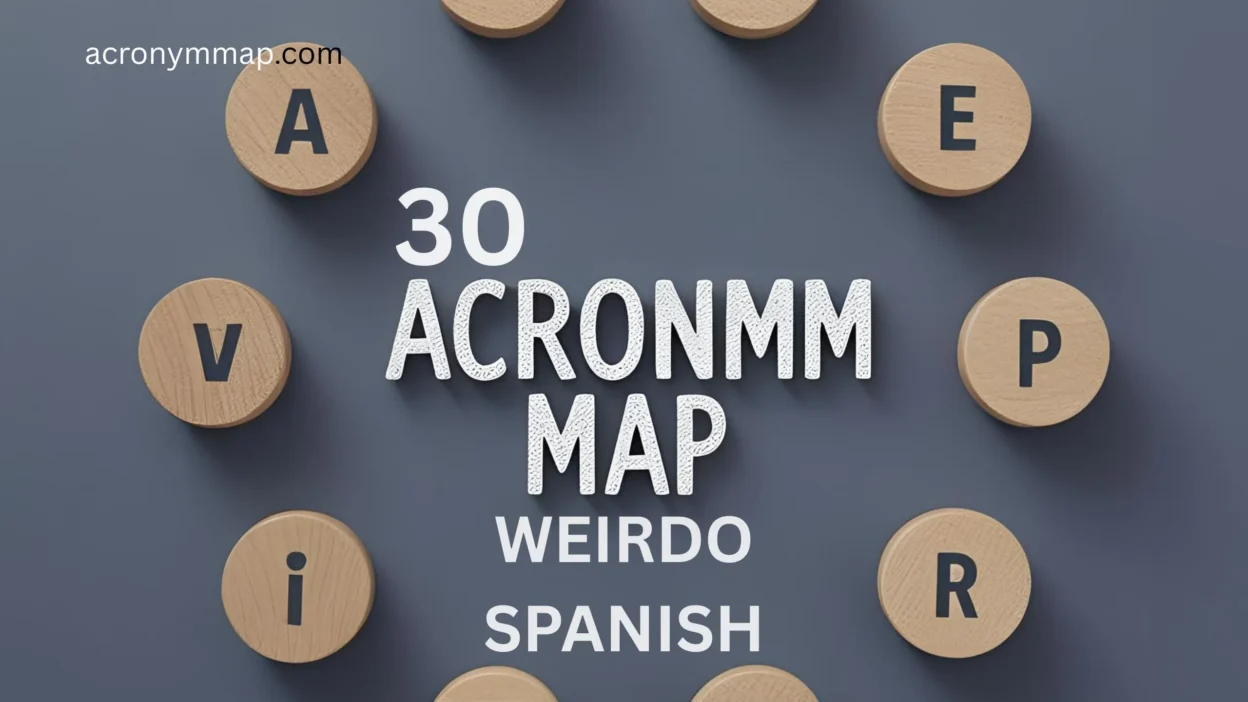When you hear the term “weirdo acronym (Spanish),” you might think of someone odd or quirky—but in Spanish grammar, WEIRDO is actually a helpful acronym used to remember the types of situations that trigger the subjunctive mood. It’s not about being strange—it’s about being grammatically precise.
Let’s explore what WEIRDO stands for in Spanish grammar, why it matters, and then walk through 30 Spanish phrases or triggers associated with this acronym. Each will include a short explanation, an example sentence, and notes on when to use it—especially in emotional, formal, or casual contexts.
💡 What Does WEIRDO Stand For?
WEIRDO is an English-based mnemonic used to remember when to use the subjunctive mood in Spanish. Here’s the breakdown:
- W – Wishes, wants, desires
- E – Emotions
- I – Impersonal expressions
- R – Recommendations/requests
- D – Doubt/denial
- O – Ojalá (hope)
When any of these elements show up in a sentence—especially followed by “que” and a change in subject—it usually triggers the subjunctive.
📘 30 WEIRDO Phrases in Spanish: Explained with Examples
Below are 30 common subjunctive-triggering phrases and verbs, organized under the WEIRDO categories. Let’s go!
🔹 W – Wishes, Wants, Desires
- Querer que – To want that
Ejemplo: Quiero que vengas conmigo.
➤ Use when expressing personal desires. - Desear que – To wish that
Ejemplo: Deseo que tengas suerte.
➤ Ideal for formal or romantic tone. - Esperar que – To hope that
Ejemplo: Espero que todo esté bien.
➤ Common in both casual and formal speech. - Preferir que – To prefer that
Ejemplo: Prefiero que no salgas tan tarde.
➤ Great for gentle suggestions or preferences. - Necesitar que – To need that
Ejemplo: Necesito que me escuches.
➤ Stronger tone; used in requests.
🔹 E – Emotions
- Alegrarse de que – To be happy that
Ejemplo: Me alegro de que estés aquí.
➤ Positive emotional tone. - Temer que – To fear that
Ejemplo: Temo que no lleguen a tiempo.
➤ Expresses anxiety or concern. - Sentir que – To feel sorry that
Ejemplo: Siento que no puedas venir.
➤ Used to express regret. - Estar triste que – To be sad that
Ejemplo: Estoy triste de que se vayan.
➤ Emotional depth, often in family or relationship context. - Tener miedo de que – To be afraid that
Ejemplo: Tengo miedo de que sea verdad.
➤ Good for expressing vulnerability.
🔹 I – Impersonal Expressions
- Es necesario que – It’s necessary that
Ejemplo: Es necesario que estudies más.
➤ Often used in formal or academic tone. - Es posible que – It’s possible that
Ejemplo: Es posible que llueva mañana.
➤ Common in speculation. - Es importante que – It’s important that
Ejemplo: Es importante que escuches.
➤ Emphasizes priority or urgency. - Es una lástima que – It’s a pity that
Ejemplo: Es una lástima que no puedan venir.
➤ Adds emotional weight. - Es bueno que – It’s good that
Ejemplo: Es bueno que lo reconozcas.
➤ Useful for affirmations or encouragement.
🔹 R – Recommendations & Requests
- Recomendar que – To recommend that
Ejemplo: Te recomiendo que lo leas.
➤ Helpful in professional or academic settings. - Sugerir que – To suggest that
Ejemplo: Sugiero que tomes un descanso.
➤ Softer tone than commanding. - Pedir que – To ask that
Ejemplo: Pido que me escuchen con atención.
➤ Direct but polite. - Aconsejar que – To advise that
Ejemplo: Aconsejo que hables con ella.
➤ Friendly advice, often used in relationships. - Exigir que – To demand that
Ejemplo: Exijo que se respete el acuerdo.
➤ Strong, formal command.
🔹 D – Doubt & Denial
- Dudar que – To doubt that
Ejemplo: Dudo que venga hoy.
➤ Best for skeptical tone. - No creer que – To not believe that
Ejemplo: No creo que sea verdad.
➤ Logical or emotional disbelief. - Negar que – To deny that
Ejemplo: Niega que lo haya dicho.
➤ Formal or argumentative context. - No pensar que – To not think that
Ejemplo: No pienso que funcione.
➤ Use for mental doubt or conflict. - No estar seguro de que – To not be sure that
Ejemplo: No estoy seguro de que eso sea cierto.
➤ Uncertainty or hesitance.
🔹 O – Ojalá (Hopefully)
- Ojalá que – Hopefully that
Ejemplo: ¡Ojalá que gane el equipo!
➤ Most iconic subjunctive phrase. - Ojalá pudiera – If only I could
Ejemplo: Ojalá pudiera ayudarte más.
➤ Use in hypothetical or nostalgic tone. - Ojalá viniera – If only he/she came
Ejemplo: Ojalá viniera a la fiesta.
➤ Regret or longing. - Ojalá no pase nada – Hopefully nothing happens
Ejemplo: Ojalá no pase nada malo.
➤ Use for anxious or cautious tone. - Ojalá haya tiempo – Hopefully there is time
Ejemplo: Ojalá haya tiempo para terminar.
➤ Used to express hope for immediate future.
🧭 When to Use These Triggers
Choosing the right WEIRDO phrase depends on the:
- Emotional context: Use “me alegro que…” for joy, or “temo que…” for fear.
- Tone of voice: “Exigir que” is forceful, while “sugerir que” is soft.
- Cultural touch: “Ojalá” has Arabic origins in Spanish and carries deep emotional or spiritual weight—more than just “I hope.”
📝 Final Thoughts
The WEIRDO acronym may sound silly, but it’s one of the best tools to remember how the subjunctive mood works in Spanish. It helps you write and speak with nuance—capturing emotion, uncertainty, or subjectivity in a way that’s deeply human.
When you understand the “GPS” of Spanish moods—Wishes, Emotions, Impersonal statements, Recommendations, Doubts, and Ojalá—you can confidently navigate complex conversations.

